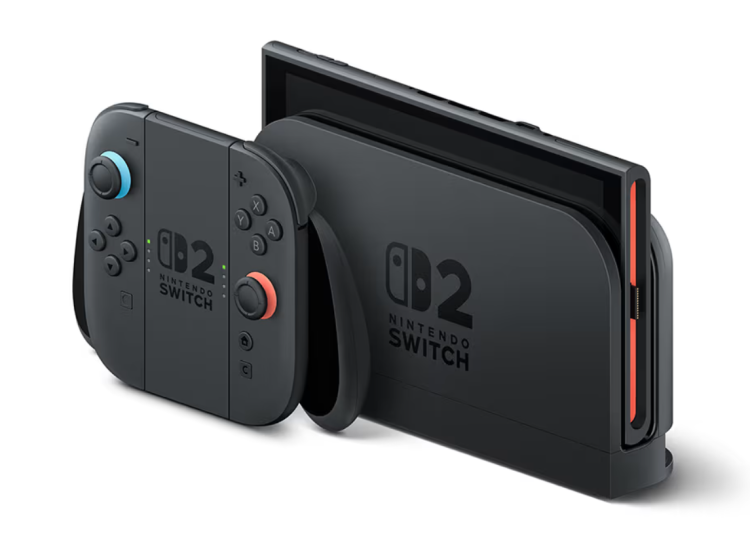Switch 2 Might Be Sold at a Loss
Despite the fan buzz and growing demand, new reports suggest Nintendo’s next-gen console isn’t the cash cow people thought. The Switch 2 sales situation is already raising a few red flags—financial ones.
Let’s start with the numbers. The Nintendo Switch 2 is priced at £395.99 in the UK and $449.99 in the US, significantly more than the original launch prices for the base model and OLED version. That bump didn’t seem unreasonable given the hardware upgrades and global inflation. But behind that retail tag? A brutal cost-to-profit ratio.
According to Toyo Securities analyst Hideki Yasuda, the Switch 2’s raw materials cost nearly $400. Once manufacturing, shipping, and other logistics are added, Nintendo’s margin gets sliced to near zero. Yasuda’s comments to Bloomberg make it clear: this isn’t your typical profit-driven launch.
“Nintendo may only be making around $4 on every Switch 2 sold in the US,” — Nintendo Prime
That’s barely more than your average cup of coffee. So yeah, Nintendo isn’t ready for the Hype —at least not financially.
The concern doesn’t end with the hardware. It extends to software, too. While the new flagship games are technically impressive, the prices are getting steeper across the board. The upcoming Split Fiction, which brings a $49.99 Price Tag to Nintendo Switch 2, might sound like a decent deal at first glance, but that’s just one of the more affordable titles.
Mario Kart World will cost up to £75 ($99) in physical format. Digital is cheaper, sure, but the psychological sticker shock is real. And while Donkey Kong Bananza comes in lower, it’s clear Nintendo is testing price elasticity hard this generation.
Third-party support is a mixed bag. The original Switch had some hits but was never a go-to platform for third-party developers. That’s changing. One of the launch window highlights, Hogwarts Legacy on Nintendo Switch 2, is a sign that Nintendo is pulling harder for cross-platform parity.
But even that might not be enough. As any analyst will tell you, third-party publishers are fickle. If sales numbers don’t impress—or if consumers focus only on Nintendo’s exclusives—the support can dry up fast.
Which brings us back to where Nintendo makes money: first-party games and licensing fees. And both depend heavily on volume.
Multiple reports now hint that Nintendo is under pressure due to rising manufacturing and transport costs. The consoles made in Vietnam reportedly cost about $338 to build, according to MST Financial analyst David Gibson. That’s cheaper than U.S. production, but the difference gets erased quickly by tariffs and distribution costs.
If those costs go up? Well, brace yourself. Because Nintendo Warns: Switch 2 Price May Increase, not just in the long run, but possibly sooner than you think. And in classic Nintendo fashion, they’ll likely make up for it with limited editions and special bundles before admitting to a straight price hike.

Switch 2 Sales: A Narrow Profit Window
Let’s put it in perspective. Sony and Microsoft have a history of selling consoles at a loss, banking on subscription services and digital purchases. Nintendo doesn’t play that game. Historically, they’ve only sold at a loss during tough periods (remember the 3DS or Wii U?). Even then, they pivoted fast.
So, if the Switch 2 is already that close to the margin, it’s a sign Nintendo is betting big on early momentum and software sales. If that gamble doesn’t pay off? They’ll either raise prices or cut costs—both moves with real consumer impact.
Also speaking about the company's difficulties, it is worth mentioning the words of a former PlayStation executive. He said that the problem is the loss of Nintendo's identity, which can be traced back to the transition from Switch to Switch 2. Why? We described it in a separate article.
Nintendo’s got the fanbase. It’s got the franchises. But with the Switch 2, it might not have the usual breathing room. As costs rise and profits stay paper-thin, it’s clear that Switch 2 sales will be one of the most closely watched financial plays in Nintendo’s history.
So next time you see that shiny new console or a £75 game on the shelf, just remember: It’s not just you feeling the pinch—Nintendo is too.

Comments